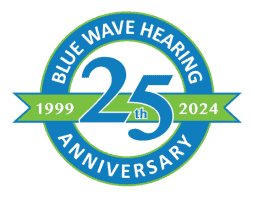- Alcohol and Hearing Health - April 9, 2025
- How Smoking Can Harm Your Ears - March 11, 2025
- Succeeding in the Workplace with Hearing Aids - February 10, 2025
Celebrate by Protecting Your Hearing
Spring has sprung, and so has the annual spring cornucopia of sounds: birds singing, children laughing, neighbors chatting — and lawn equipment.
Maintaining your burgeoning plant life is a noisy affair. Once you’ve used the mower, leaf blower, chain saw, and string trimmer, your ears have put up with quite a racket.
With noise-induced hearing loss (NIHL) affecting one in four U.S. adults ages 20 to 69, according to the Centers for Disease Control, it might be worth exploring the question, “But how dangerous is all that noise, really?”
Noise-Induced Hearing Loss
Hearing happens when the hair cells in your inner ear convert sound signals to electrical signals, and these electrical signals get sent to your brain to be interpreted as sounds. Every hair cell that gets damaged, therefore, means a reduction in your ability to hear. NIHL, then, is hearing damage caused by exposure to loud noise, which damages your hair cells.
Your Loud Lawn
You might be thinking, “Yeah, but how loud can all my lawn gear actually be?” Well, your hedge trimmer alone can damage your hearing after 7 or 8 minutes of exposure.
The key to navigating your loud lawn is decibels, the basic unit of sound intensity. Sounds below 85 decibels (dB) are safe for unprotected human ears. At 85 dB and above, you’re in the action zone: Take steps to protect your ears or risk hearing damage.
Let’s take a look at some common yard-care machines and the decibel outputs they inflict on your unprotected ears. For comparison, a typical indoor conversation is about 60 dB.
- Push or riding lawn mower. At 90 dB, hearing damage can occur in 2 ½ hours.
- Edger/string trimmer. At 96 dB, hearing damage can occur in 38 minutes.
- Leaf blower. At 99 dB, hearing damage can occur in 19 minutes.
- Pressure washer. At 100 dB — just one more decibel than a leaf blower — hearing damage can occur in 15 minutes rather than 19 minutes.
- Hedge trimmer. At 103 dB, hearing damage can occur in 7 ½ minutes.
- Chain saw. At a whopping 110 dB, hearing damage starts at 1 ½ minutes.
Hearing Protection
With output like that, it’s no wonder NIHL is so common. But that prevalence hides an important fact: NIHL can be easily and inexpensively prevented with hearing protection.
Hearing protection is a proven, effective way to minimize the risk of hearing damage, and it doesn’t have to mean a muffled, plugged experience for the wearer. You can get earplugs for as little as a few dollars for 20 pairs at a pharmacy, but there are also over-the-counter options that allow conversation to come through but block loud noises. You can even buy custom-fit earplugs that match the contours of your ears for maximum comfort.


